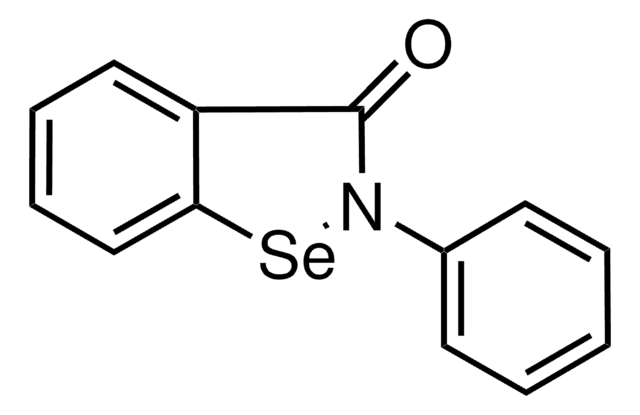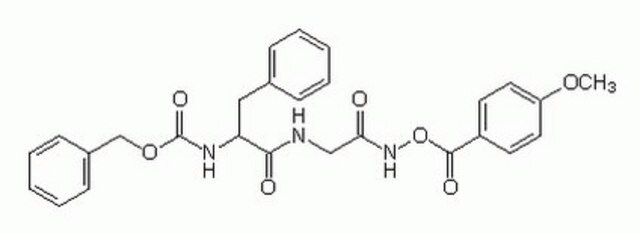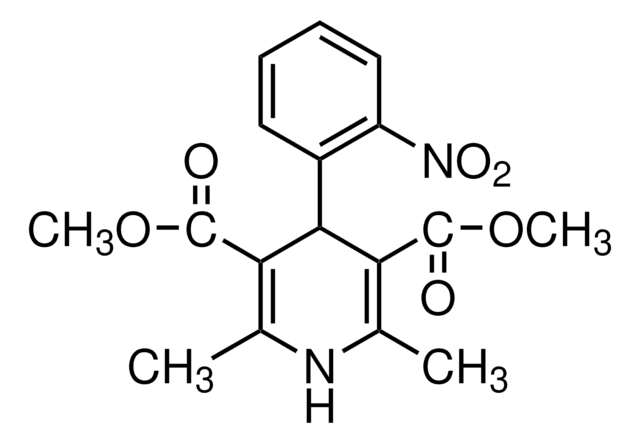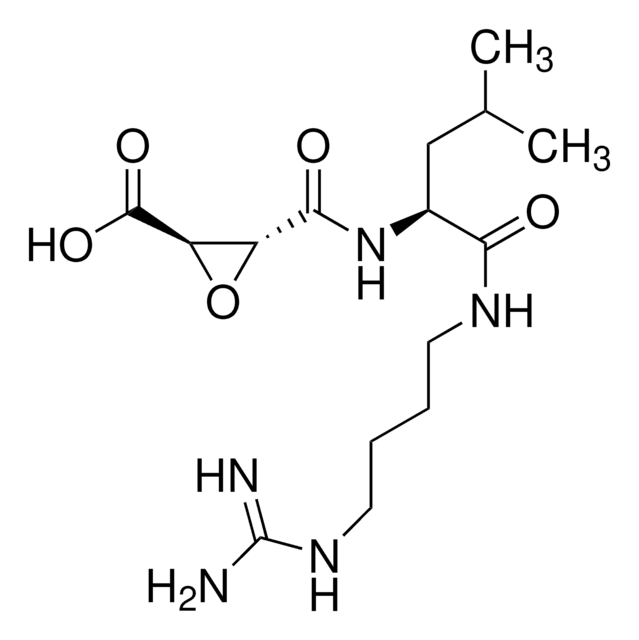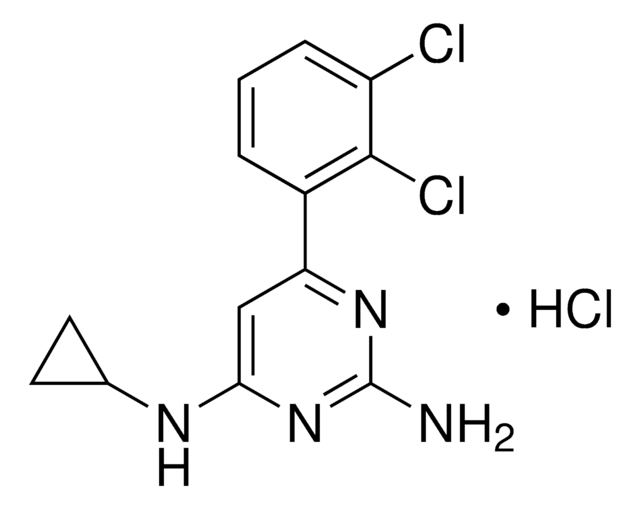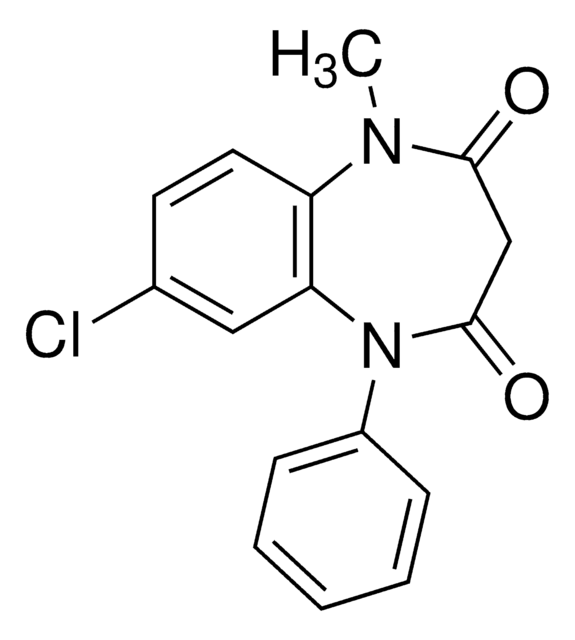C1480
Z-Phe-Ala fluoromethyl ketone
≥90% (TLC), powder
Synonym(s):
Z-FA-FMK
Sign Into View Organizational & Contract Pricing
All Photos(1)
About This Item
Linear Formula:
C21H23N2O4F
Molecular Weight:
386.42
MDL number:
UNSPSC Code:
12352209
PubChem Substance ID:
NACRES:
NA.77
Recommended Products
Quality Level
Assay
≥90% (TLC)
form
powder
color
white to off-white
solubility
DMSO or DMF: 20 mM
shipped in
dry ice
storage temp.
−20°C
SMILES string
C[C@H](NC(=O)[C@H](Cc1ccccc1)NC(=O)OCc2ccccc2)C(=O)CF
InChI
1S/C21H23FN2O4/c1-15(19(25)13-22)23-20(26)18(12-16-8-4-2-5-9-16)24-21(27)28-14-17-10-6-3-7-11-17/h2-11,15,18H,12-14H2,1H3,(H,23,26)(H,24,27)/t15-,18-/m0/s1
InChI key
ASXVEBPEZMSPHB-YJBOKZPZSA-N
Application
Z-Phe-Ala fluoromethyl ketone (Z-FA-FMK) has been used as a:
- cathepsin inhibitor to study its effects on dendritic cells
- papain-like cysteine protease inhibitor to study its effects on cadmium-induced mitochondrial apoptosis
- cysteine protease inhibitor to study its effects on the interaction of toll-like receptor 9 (TLR9) with granulin in RAW macrophages
Biochem/physiol Actions
Z-Phe-Ala fluoromethyl ketone (Z-FA-FMK) is an inhibitor of cysteine proteases, such as cathepsin B and L. It can also inhibit recombinant effector caspases 2, -3, -6, and -7 and not initiator caspases 8 and -10. Z-FA-FMK plays a role in blocking nuclear factor κ-light-chain-enhancer of activated B cells (NF-κB) transactivation. It exhibits therapeutic effects against rheumatoid arthritis.
Storage Class Code
11 - Combustible Solids
WGK
WGK 3
Flash Point(F)
Not applicable
Flash Point(C)
Not applicable
Personal Protective Equipment
dust mask type N95 (US), Eyeshields, Gloves
Choose from one of the most recent versions:
Already Own This Product?
Find documentation for the products that you have recently purchased in the Document Library.
Transcription factor E3 protects against cadmium-induced apoptosis by maintaining the lysosomal-mitochondrial axis but not autophagic flux in Neuro-2a cells
Pi H, et al.
Toxicology Letters, 295(4), 335-350 (2018)
Yun-Pei Zhang et al.
American journal of physiology. Gastrointestinal and liver physiology, 311(6), G1091-G1104 (2016-10-30)
LPS-induced microvascular hyperpermeability and hemorrhage play a key role in the development of sepsis, the attenuation of which might be an important strategy to prevent sepsis. However, the current clinical therapies have proven to be inefficient in improving the prognosis
Man Kyu Shim et al.
Journal of controlled release : official journal of the Controlled Release Society, 294, 376-389 (2018-12-15)
Cancer nanomedicine using nanoparticle-based delivery systems has shown outstanding promise in recent decades for improving anticancer treatment. However, limited targeting efficiency, low drug loading efficiency and innate toxicity of nanoparticles have caused severe problems, leaving only a few available in
Michael J Mitchell et al.
Nature communications, 8, 14179-14179 (2017-03-21)
Physical forces affect tumour growth, progression and metastasis. Here, we develop polymeric mechanical amplifiers that exploit in vitro and in vivo physical forces to increase immune cytokine-mediated tumour cell apoptosis. Mechanical amplifiers, consisting of biodegradable polymeric particles tethered to the
Katherine A Staines et al.
Journal of cellular physiology, 231(6), 1392-1404 (2015-12-08)
The transmembrane glycoprotein E11 is considered critical in early osteoblast-osteocyte transitions (osteocytogenesis), however its function and regulatory mechanisms are still unknown. Using the late osteoblast MLO-A5 cell line we reveal increased E11 protein/mRNA expression (P < 0.001) concomitant with extensive osteocyte dendrite
Our team of scientists has experience in all areas of research including Life Science, Material Science, Chemical Synthesis, Chromatography, Analytical and many others.
Contact Technical Service


